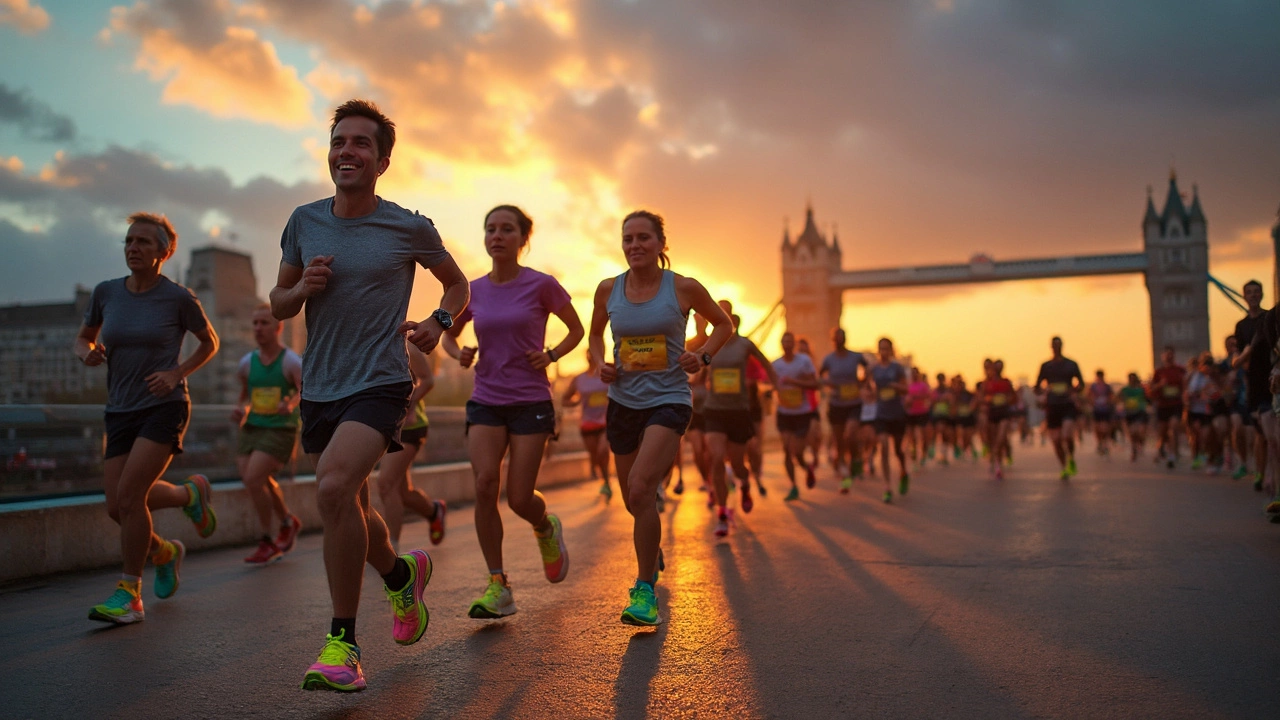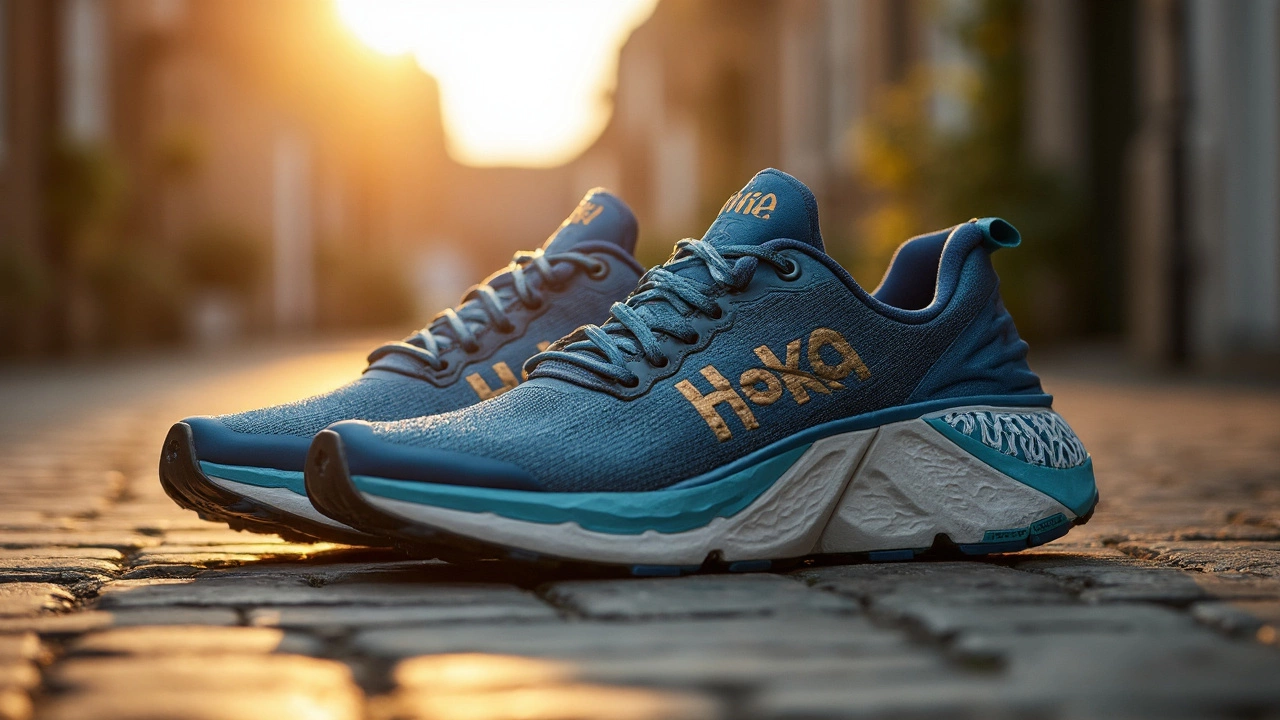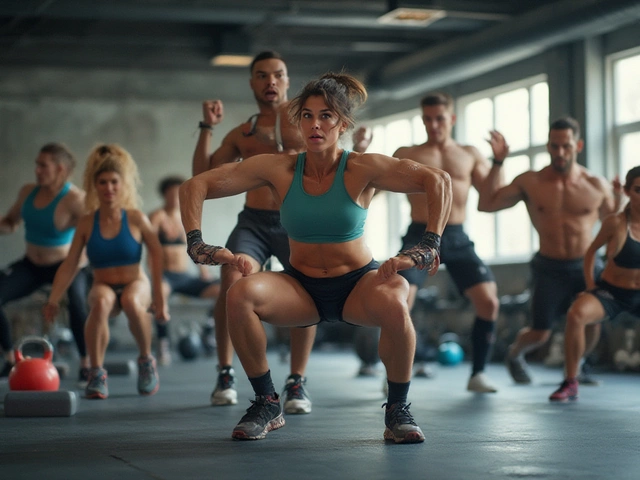
Running Shoes May 6, 2025
What Makes HOKA Running Shoes Stand Out?
Pick up a pair of HOKA shoes and you’ll spot something almost right away—they look different. The soles are thick, almost oversized. You might wonder if that means they’re slow or heavy. But here’s the thing: those chunky-looking midsoles pack a ton of lightweight cushioning. This is why runners keep talking about HOKA.
If you deal with sore feet, achy knees, or constant pounding on hard pavement, HOKA’s monster cushioning can be your best friend. The bounce you get takes the edge off every step. That extra foam isn’t just for show; it absorbs shock and gives serious support without making the shoe feel like a brick.
- The HOKA Story: From Niche to Famous
- The Real Difference: Cushioning and Foam
- Why Runners Choose HOKA
- Finding the Right Pair for You
The HOKA Story: From Niche to Famous
Back in 2009, two French trail runners—Nicolas Mermoud and Jean-Luc Diard—looked at the running shoes market and saw the same skinny, minimalist sneakers everywhere. Instead of going even lighter, they went the other way, piling on foam to absorb shock. Early testers in the Alps called their prototypes “marshmallows.”
HOKA’s first fans were ultra-distance runners who needed serious protection for hours on rocky trails. At first, the thick soles looked odd, but the extra cushioning worked, especially for runners racking up huge mileage. HOKA shoes started popping up at ultramarathons where finishing the race could hinge on not trashing your legs by mile 70.
For a while, HOKA was a niche name you’d only hear from trail nerds or see at specialty running shoes shops. But things picked up fast. Runners tired of sore feet and pounding pavement started trying them for marathons and training runs. In the U.S. alone, HOKA sales jumped over 50% in a single year during their big breakout in the early 2010s.
| Year | Milestone |
|---|---|
| 2009 | Brand founded by Mermoud and Diard |
| 2010 | First models arrive in specialty shops |
| 2013 | Mainstream marathoners catch on; bigger stores pick up the brand |
| 2020 | One of the top-selling running shoes choices in North America |
Now, you see HOKAs everywhere—from everyday joggers to pro athletes. The brand turned what looked like a wild idea into a whole new category of comfortable running shoes. If you want proof, just check out finish lines at any big city marathon or peek inside your local running store. HOKA went from a weird niche to a go-to choice for comfort chasers who don’t want to compromise on speed.
The Real Difference: Cushioning and Foam
If you’ve ever tried on regular running shoes and then slipped your foot into a pair of HOKA kicks, you’ll notice the difference instantly. The thick, almost cloud-like midsoles aren’t just for looks—they use unique foams that set them apart from the usual running shoe brands.
HOKA uses two main types of foam. The first is EVA (ethylene-vinyl acetate), which is pretty common in the running shoes world. But HOKA tweaks the formula so that their EVA is lighter and more responsive than most. Second, some models have a ProFly midsole—soft at the heel, firmer at the toe. This means you get cushy landings and quick takeoffs, which is ideal for runners who want both comfort and speed.
They call their design "maximalist" because of the tall stack of cushioning. But here’s the twist—most HOKAs are actually lighter than lots of traditional shoes with less foam. That’s a big win for folks who rack up miles and don’t want to drag around heavy shoes.
Let’s break down what that means for you:
- Less fatigue: The extra cushioning helps eat up shock, so your legs won’t feel as trashed after a long run.
- Better support: The wide base keeps your foot stable, great for roads, trails, or if you sometimes roll your ankle.
- All-day comfort: Tons of folks (even nurses and teachers) wear HOKA shoes for hours on their feet.
If you geek out on numbers, here’s a quick look at stack heights and weights in popular HOKA models, compared to some classic shoes:
| Shoe Model | Stack Height (mm) | Weight (Men’s US 9) |
|---|---|---|
| HOKA Clifton 9 | 32 | 8.7 oz |
| HOKA Bondi 8 | 39 | 10.8 oz |
| Nike Pegasus 41 | 30 | 9.1 oz |
| Brooks Ghost 16 | 33 | 10.1 oz |
It’s kind of wild—a HOKA like the Clifton has more foam underfoot, yet still comes in lighter than some classic running shoes. That’s the magic formula HOKA figured out, and it’s exactly what keeps devoted fans coming back.

Why Runners Choose HOKA
People get curious about HOKA when they spot those thick, cloud-like soles at races, on local tracks, and in running groups. But curiosity sticks around because these shoes keep delivering real results for their users.
One huge selling point is comfort. Unlike a lot of traditional running shoes, HOKA packs in more foam without the clunky, heavy feeling. You end up getting soft landings that help cushion your feet—especially on those days you’re logging lots of miles. There’s actually less stress on your joints and muscles, so you bounce back faster after long runs.
- Cushioning without Bulk: The meta-rocker design means you roll through each stride smoothly, not just sinking into foam.
- Light on Weight: Most HOKA shoes are surprisingly lightweight for how cushy they are, thanks to materials like EVA foam. Models like the Clifton and Rincon weigh in under 9 ounces for men’s sizes.
- Good for Recovery: A ton of runners swear by these shoes after battling injuries—plantar fasciitis, shin splints, you name it—because the extra support helps your feet and legs recover.
- Fits for All Runners: HOKA doesn’t just target elite pros. You’ll see walkers, nurses, and folks who just want all-day comfort lacing them up, too.
The numbers back up the hype. According to a 2024 retail survey, HOKA became one of the top three running shoe brands sold at specialty running stores across the U.S. That jump isn’t just about marketing. A lot of runners post online about running farther with less fatigue or pain than with other brands.
| Feature | Benefit |
|---|---|
| Oversized midsole | Soft underfoot feel, less joint impact |
| Meta-Rocker shape | Smoother stride transition |
| Low weight | Less muscle fatigue during long runs |
| Variety in fit | Wide, regular, and narrow widths |
HOKA shoes also tend to last. Many runners report clocking over 400 miles on a pair before the foam starts to lose its bounce. With comfort, performance, and durability, it’s easy to see why runners keep choosing HOKA.
Finding the Right Pair for You
HOKA isn’t just about that wild sole—they offer a whole lineup, and it’s easy to get lost in the options if you don’t know what you’re looking for. Start by thinking about your running habits: Are you pounding pavement, grinding out miles on trails, or just looking for comfort on dog walks? Getting the right HOKA model for your needs makes all the difference.
If you mostly stick to roads, the HOKA Clifton and Bondi are two of the best-known options. The Clifton is lighter with a slightly firmer ride, while the Bondi is famous for having the most max cushion in the whole HOKA running shoes lineup. If you want something even lighter and faster for races or workouts, the Mach and Rincon models are popular picks—still cushioned, but with a snappier feel.
Trail runners lean toward the Speedgoat or Challenger. The Speedgoat has gnarly grip for technical trails, and the Challenger feels like a beefed-up road shoe that can handle the dirt. Both have that classic HOKA blend of plush foam and easy ride, just designed for uneven ground and rocks.
If you’re not sure about your running needs, or if you have specific issues like flat feet or high arches, you might want to check out the Arahi (for stability) or Gaviota (extra support). And don’t forget to consider width—HOKA now makes wide versions in many models because, let’s face it, not everyone has a narrow runner’s foot.
To help you compare at a glance, here’s a simple table with popular HOKA models and what they’re best for:
| Model | Best For | Key Feature |
|---|---|---|
| Clifton | Everyday road running | Lightweight, balanced cushion |
| Bondi | Maximum comfort | Most cushioning, soft ride |
| Mach | Speed and training | Responsive foam, faster feel |
| Speedgoat | Technical trails | Traction, durable outsole |
| Arahi | Stability | J-Frame support for overpronation |
One more tip: when trying on HOKA running shoes, go later in the day since feet tend to swell, and always take them for a spin in-store or on a treadmill if possible. That thick cushion feels different from regular running shoes, but for a lot of people, it’s a game changer.




